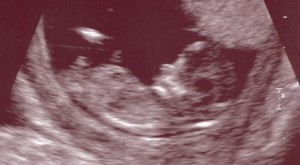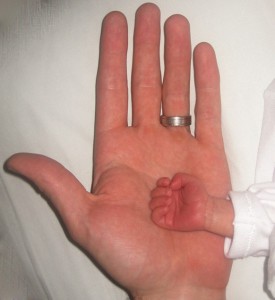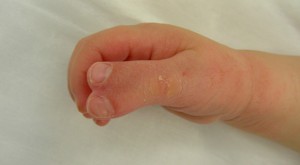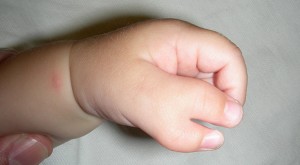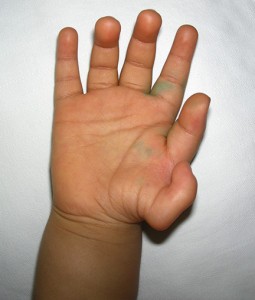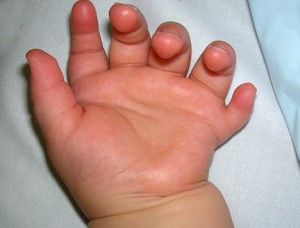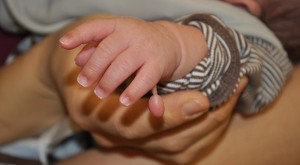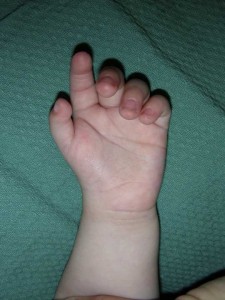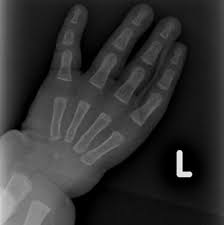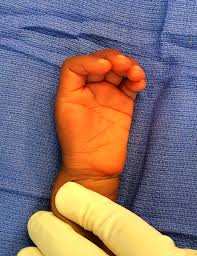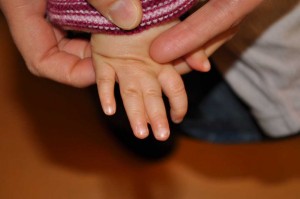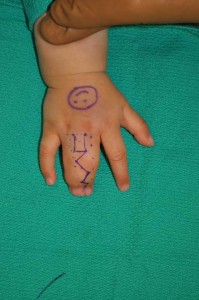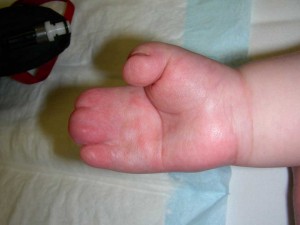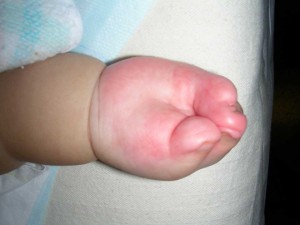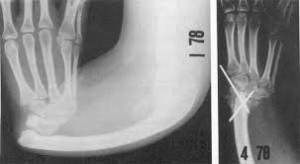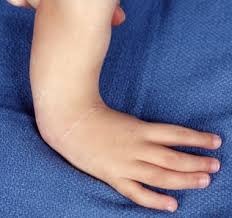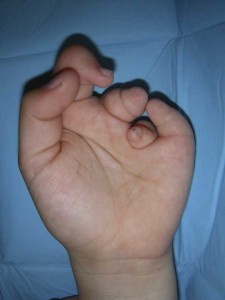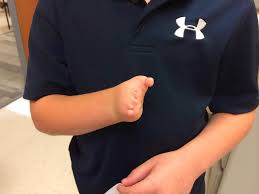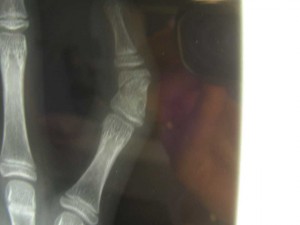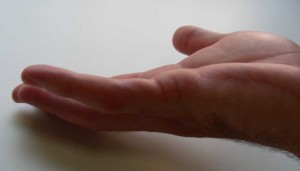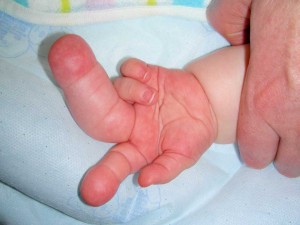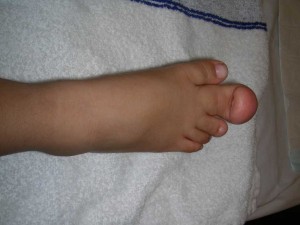Children's Hand Surgery
When the body is forming, particular signals are given off by cells within the upper limb. These signals control the growth and development of the hand and fingers and the entire upper limb. The process of formation of the hand and fingers happens within the first 10 weeks of pregnancy, starting as early as 20 days of gestation. If these signals go wrong then the hand and arm can form in different patterns leading to a congenital hand difference.
The known signals that control growth of the hand and fingers control how many fingers are formed and where they are formed. The signals can be too weak leading to smaller underformed or missing digits (Hypoplasia ) or too strong leading to extra digits (Polydactyly). Depending which side of the hand the signal originates from this may mean extra thumbs or little fingers or absence of the thumb or little fingers or even joining of digits (Syndactyly).
Other than the signaling factors there are other events that can occur during gestation that have an affect on the growth and development of a childs hand and upper limb. This can be genetic factors (differences of the hand are occasionally part of a larger genetic disorder), physical or chemical factors.
There is a very wide range of differences of the hand that will affect the use of the hand in different ways. In many conditions surgery is not necessary and the functional ability of the hand will be excellent. In some minor differences all that is needed is input from hand therapists to maximize the use of the affected hand. In others the condition can be repaired and or the function of the hand significantly improved with surgery.

